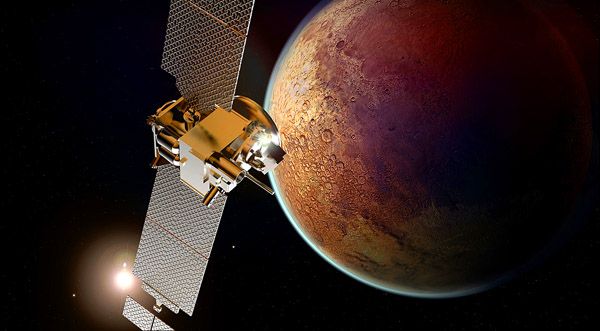There are plenty of challenges to putting people on Mars, whether you look at the rocket, the astronaut or the planet itself.
New data from one of the many spacecraft at work around Mars confirm just how dangerous a round-trip human journey would be by measuring the amount of radiation an astronaut would experience.
Cosmic radiation is made up of incredibly tiny particles moving incredibly fast, nearly at the speed of light — the sort of phenomenon a human body isn’t very well equipped to withstand. That radiation travels across all of space, but Earth’s atmosphere buffers us from the worst of its impacts. That means the farther away from Earth’s surface you go, the more cosmic radiation your body absorbs.
By the time you’re traveling to and from Mars, that gets to be a very big problem. “Radiation doses accumulated by astronauts in interplanetary space would be several hundred times larger than the doses accumulated by humans over the same time period on Earth, and several times larger than the doses of astronauts and cosmonauts working on the International Space Station,” Jordanka Semkova, a physicist at the Bulgarian Academy of Sciences and lead scientist on the new research, said in a statement. “Our results show that the journey itself would provide very significant exposure for the astronauts to radiation.”
Those results are based on data from the European Space Agency’s Trace Gas Orbiter, a spacecraft that has been circling the Red Planet since 2016. One of the instruments it carries is a dosimeter, which has been taking measurements throughout the orbiter’s journey.
By Meghan Bartels – Full Story at Live Science



